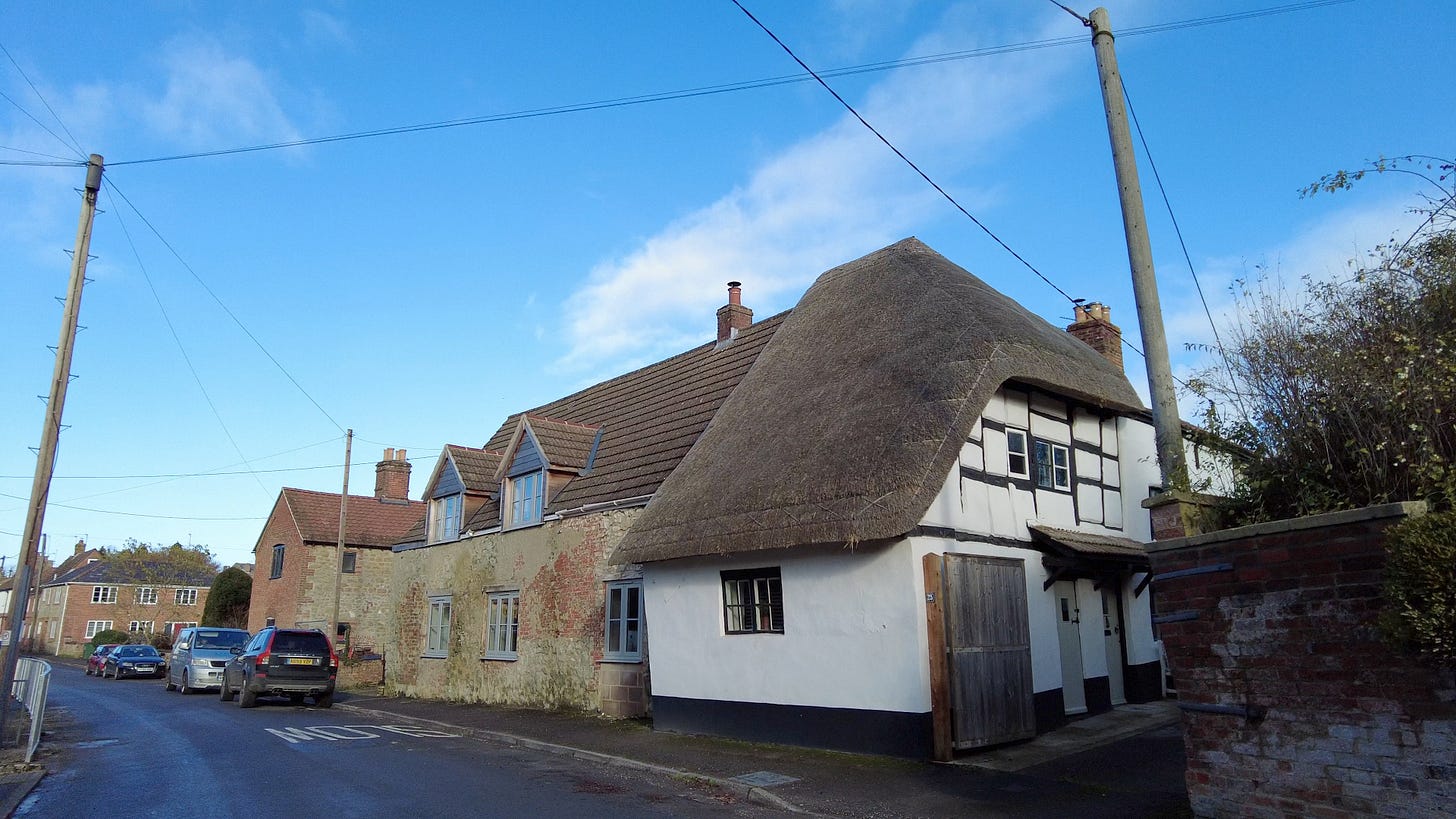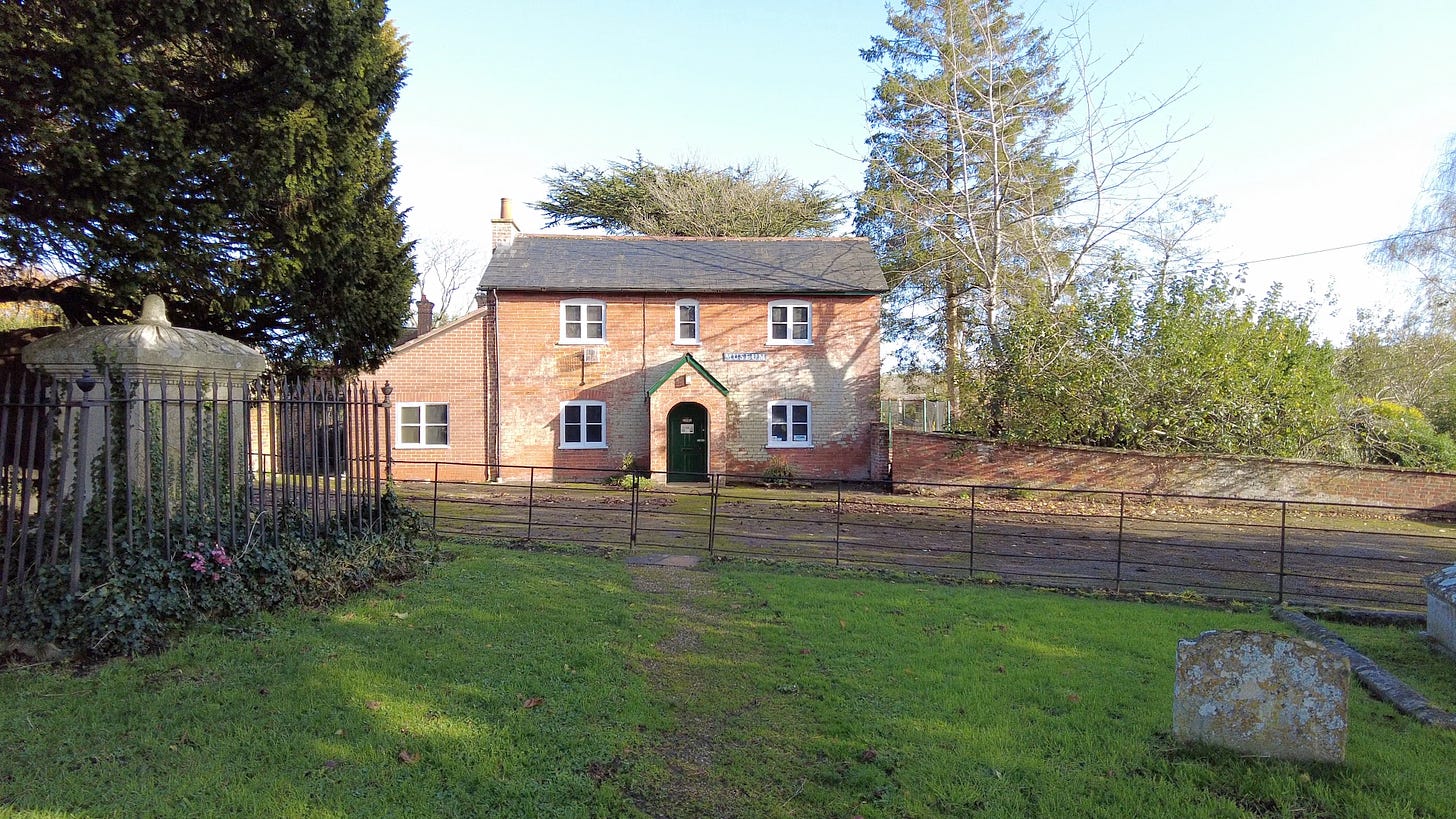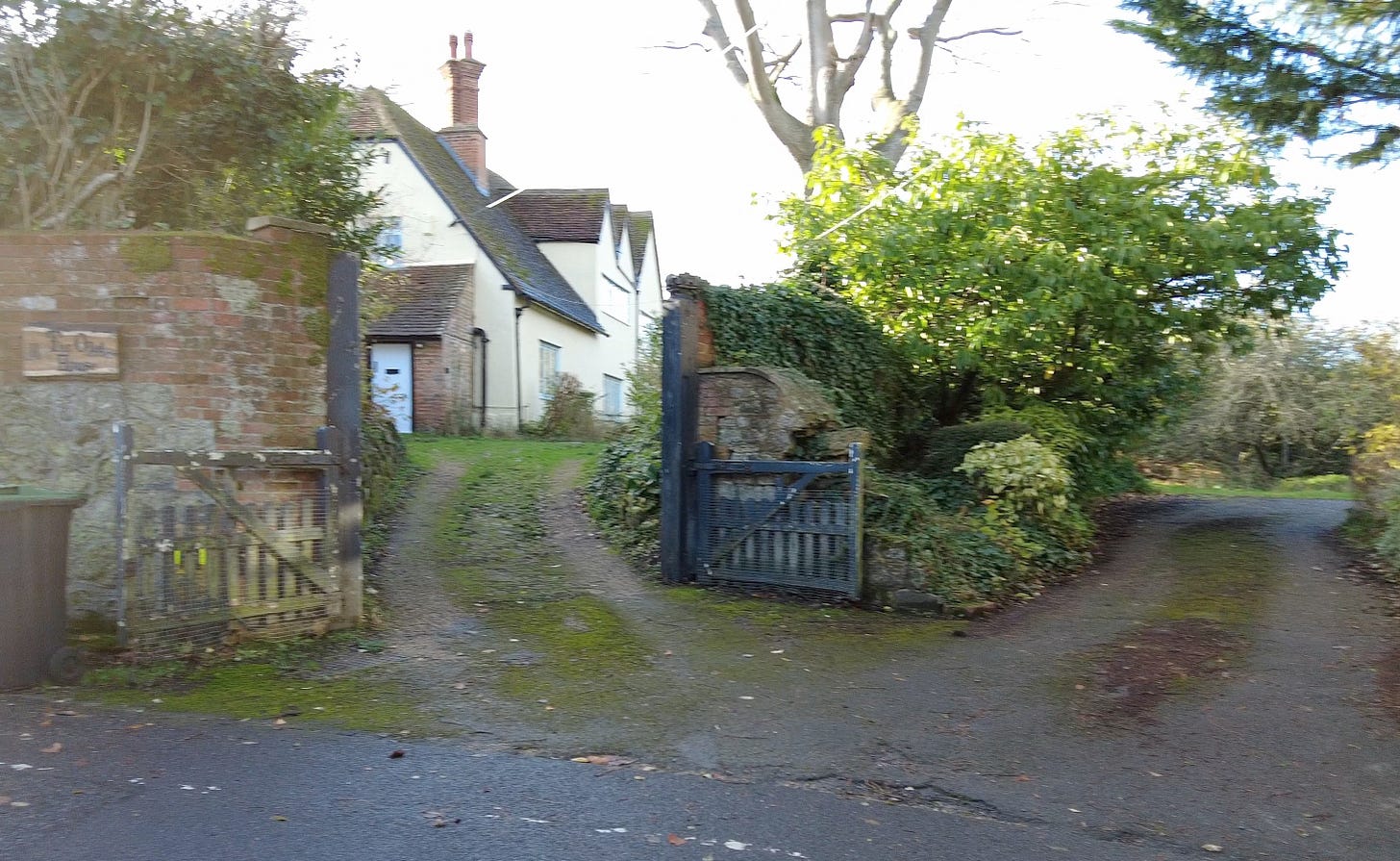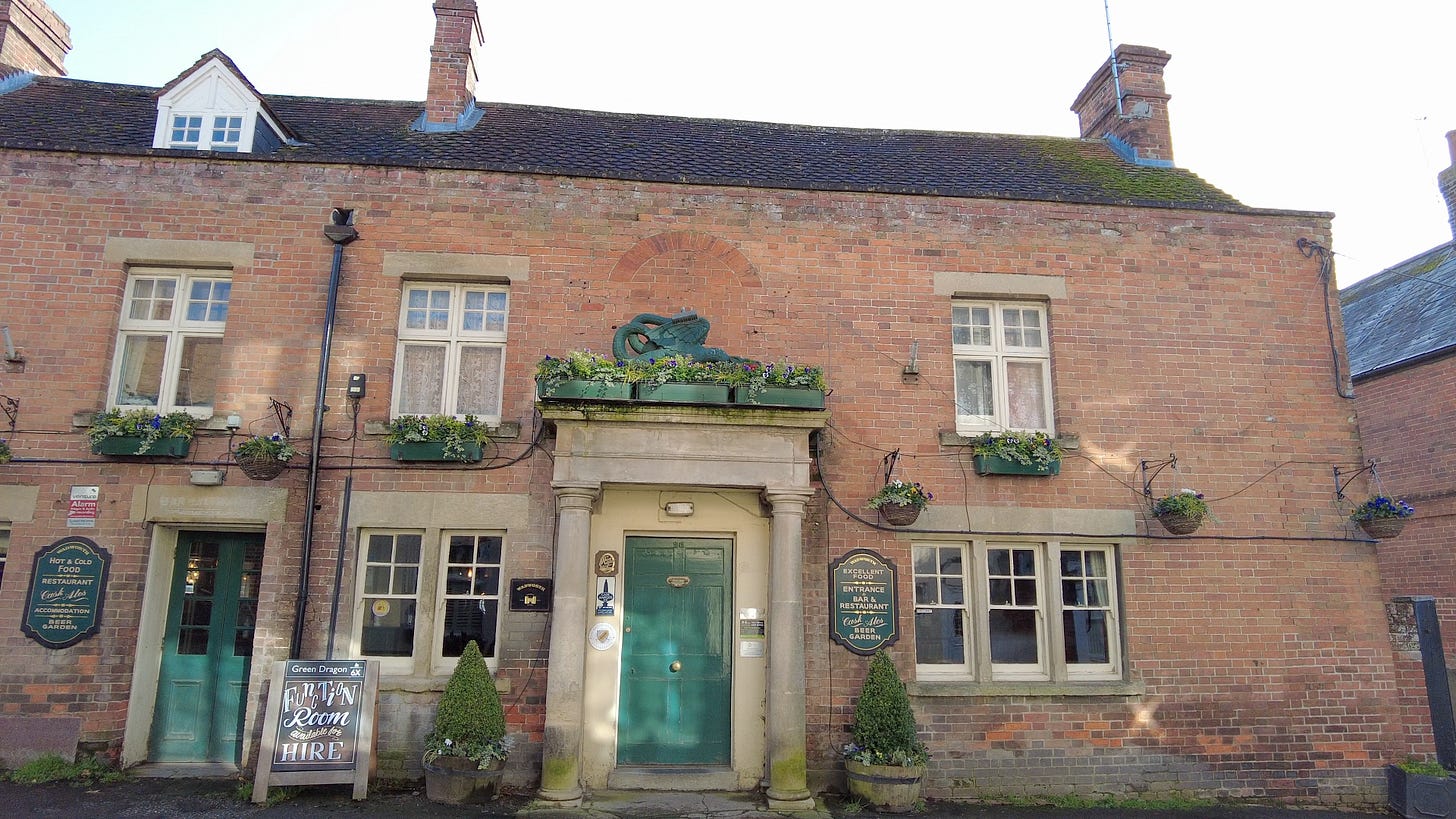Market Lavington
A market town that's now a village
I have wanted to visit Market Lavington for a while, and the time and conditions didn’t work out until the end of November. I did visit the museum in October, as it closes for the winter months; the weather wasn’t good for looking around the village on that occasion. I will tell you more about the museum later.
Market Lavington can rightly be described as a town that has been relegated to village status. It is five miles south of Devizes, with a population of about 2,200. This makes it a large village, and one that in the past had many shops, pubs and other businesses. Today, there are few shops; the Post Office is the most recent casualty to close. Recorded in the Domesday Book (1086), it has two entries. Listed as Laventone, it had 38 households, 12 acres of woodland and 3 mills. I describe it as linear and runs mainly west to east along one road with several offshoots along the way.
The area has been inhabited for a long time. St Mary’s Church is late 13th century, with earlier evidence of an earlier 12th-century Norman building found in fragments within the church fabric. It was restored in 1864. Looking west from the church, there is newer housing, and at the time of construction, archaeological surveys found Roman remains.
Close to the church, tucked behind the graveyard, is the Old Schoolmaster’s House, built in 1846, which houses the museum. It’s a small museum looked after by a group of dedicated volunteers. When I visited in October, they told me that each year the display is changed to show some of the thousands of objects that otherwise would not see the light of day. One volunteer told me that they have over ten thousand photographs. They would like to digitise them in the future so that more can access them. Visitors often turn up from the other side of the world when they are researching their family trees. It’s definitely worth a visit, and here is the link to the museum, and also the Curator’s Blog is very interesting.
As I walk through the village, it is obvious that many of the houses used to be shops; the windows tell of their former use. Some homes still have the metalwork attached to the walls that held their long-gone pub signs. In the museum’s collection of photos, you can see many of these shops that once served Market Lavington. There was even a department store! This was once a busy little town and had a market until the mid-19th century. A charter in 1254 granted a weekly market, and the marketplace was large. It now has a small development of bungalows and a car park built on it.
Before reaching the Market Place, I arrive at crossroads. On one corner is a cafe with an interesting name, St. Arbucks. I had to think about it - Starbucks! Very clever. This is a community cafe set up by Trinity Church after it moved to the Community Hall for its services. The cafe opened in 2013.
To my right is White Street, where you will find plenty of older houses and a former brewery that closed in 1920. This was the last pub to brew its own beer and was called the Brewery Tap. There was a time in Market Lavington when all the pubs brewed their own beer. What an interesting time that must have been! I think real ale drinkers today would be delighted if that was still happening.
To my left is Parsonage Road, where further along on the left-hand side lies the oldest home in Market Lavington. Appropriately it is called The Old House. It is a 14th-century manor house. Inside it has the structure of an early medieval double-aisled open hall. This is the only example in Wiltshire of such a structure. The house was remodelled in the late 17th or early 18th century and restored in 1875. It is now protected with a Grade 1 listing.
Walking past this fine old home, which you can really only get a side-on glimpse of from the road, I head away from the village until I reach the junction of Grove Road and then turn right along a footpath to reach the appropriately named Northbrook that will lead me to the Market Place. At the Market Place, I reach the High Street, and it is apparent just how many of these homes used to be shops. There is still a Cooperative convenience store, pharmacy, hairdresser, butcher and the 17th-century, Green Dragon Pub. It’s sad to see so many houses that once were thriving shops, but at least they are not standing empty as retail premises.
You will notice that many of the properties are of brick construction, most likely because Market Lavington had brickworks until it closed in the 1950s. Please watch my YouTube video below, where you can join me in real-time as I walk around the village, and you can see these properties.
One of the things about these old villages and towns is how the oldest buildings can be sandwiched between properties and the population expanded. For example, in the High Street is The Red House. This was a farmhouse built in the 17th century and is now very much part of the village with just a garden at the rear, the farm buildings and land long gone. If a good cricketer hits a six from the garden, it will reach the open fields behind. In Market Lavington, you are never far from farmland.
Walking along White Street, having come full circle back to St. Arbucks Cafe, I pass the former Brewery Tap until I reach a stream. This area is called Broadwell, judging by names on the cottages, and the stream appears from a culvert passing under properties and the road. This stream will eventually reach where water mills once operated. A child’s play area is situated, making it a pleasant area for families to spend some time with their children. I follow the stream as there is a footpath alongside, which takes me back close to my starting point via The Muddle (lovely name). There seem to be many such paths around the village, and it would be good to explore more. I expect those who like to take a daily walk can enjoy many routes and not get bored.
Market Lavington did have access to the rail network with a small station at Littleton Panel just to the west of the village. The line is still active, and anyone wishing to catch the train to Paddington, London, or Penzance in the other direction, can do so at Westbury, around 11 miles away. There are many stations in between!
There is so much history to this village and tales to tell from the locals who once lived and worked here. It will call for more visits to the museum and research before I can relate some of them to you. Please subscribe, and you will be able to read them as soon as they are published. The video below contains my whole walk around the village. Sit back, make a drink and enjoy the 42 minutes you will spend with me!













What a fantastic site and youtube channel - glad to have come across it!